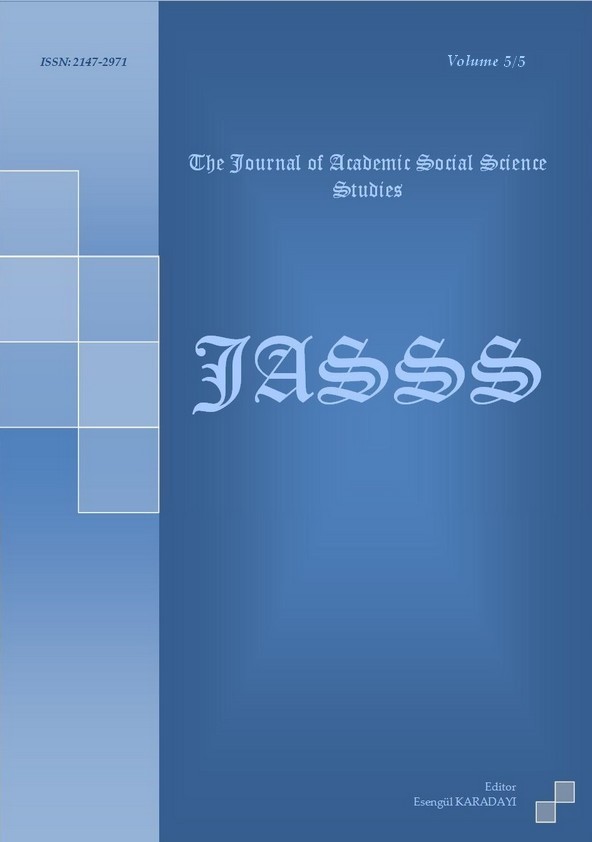Author :
Abstract
1844’te doğup 1912’de vefat eden Ahmet Mithat Efendi, Türk edebiyatının en üreken yazarlarındandır. Henüz Balkan topraklarında eğitimine devam ederken Mithat Paşa sayesinde Tuna gazetesinde muharrirlik yapmaya başlayan Ahmet Mithat Efendi, Bağdat’ta çıkan vilayet gazetesi olan Zevra’da da muharrirliğini sürdürür (1869). 1871’de İstanbul’a yeniden gelen Ahmet Mithat Efendi yine bu mesleği sürdürecek, menfâ (sürgün) yılları hariç 40 yıl boyunca basın, sanat, edebiyat ve kültür hayatı içindeki unutulmaz ve abidevî yerini alacaktır. Çalışmamızda, içinde bulunduğumuz yılın, vefatının 100. yılı olması münasebetiyle hem onu hatırlamak / hatırlatmak amacı güdülecek hem de onun en öne çıkan yönlerinden olan romancılığı üzerinde durulacaktır. Başka bir deyişle bir nekroloji hüviyetinde kaleme alınacak çalışmamızda, özellikle Ahmet Mithat Efendi’nin roman sanatına değinilecektir.
Keywords
Abstract
Ahmet Mithat Efendi who was born in 1844 and died 1912 is one of the most productive writers in Turkish literature. When Ahmet Mithat Efendi continues his education in the territory of the Balkan, he begins to work as a correspondent at Tuna newspaper thanks to Mithat Paşa. He also carries on working as a correspondent at Zevra which is a province newspaper being published in Bağdat (1869). Ahmet Mithat Efendi who comes back to İstanbul in 1871 pursues this job yet. He takes his unforgettable and monumental place in press, art, literature and culture life over 40 years except his exile years. In our study, since it passed one hundred years from his death, the aim of remembering and reminding him will be intended and also it will be gone through his works as being a novelist. On the other words, our study will be written in the identity of necrology and especially, we will deal with Ahmet Mithat Efendi’s art of the novel.
Keywords
- Ahmet Mithat Efendi (2002), Menfa / Sürgün Hatıraları, Haz. Handan İnci, Arma Yayınları, İstanbul
- Ahmet Mithat Efendi (1996), Felâtun Bey ile Râkım Efendi, Akçağ Yayınları, İstanbul.
- Ahmet Mithat Efendi (2000a), Hasan Mellâh yahut Sır İçinde Esrar, Haz. Ali Şükrü Çoruk, Türk Dil Kurumu Yayınları, Ankara
- Ahmet Mithat Efendi (2000b), Dünyaya İkinci Geliş yahut İstanbul’da Neler Olmuş, Felâtun Bey ile Râkım Efendi, Hüseyin Fellâh, Haz.Kâzım Yetiş – Necat Birinci M. Fatih Andı, Türk Dil Kurumu Yayınları, Ankara
- Ahmet Mithat Efendi (2000c), Zeyl-i Hasan Mellâh yahut Sır İçinde Esrar, Haz. Ali Şükrü Çoruk, Türk Dil Kurumu Yayınları, Ankara
- Ahmet Mithat Efendi (2000d), Paris’te Bir Türk, Haz. Erol Ülgen, Türk Dil Kurumu Yayınları, Ankara
- Ahmet Mithat Efendi (2000e), Çengi, Kafkas, Süleyman Muslî, Haz. Erol Ülgen - Fatih Andı, Türk Dil Kurumu Yayınları, Ankara
- Ahmet Mithat Efendi (2000f), Yeryüzünde Bir Melek, Haz. Nuri Sağlam, Türk Dil Kurumu Yayınları, Ankara
- Ahmet Mithat Efendi (2000g), Henüz 17 Yaşında, Acâyîb-i Âlem, Dürdane Hanım, Haz. Nuri Sağlam, Kâzım Yetiş, M. Fatih Andı, Türk Dil Kurumu Yayınları, Ankara
- Ahmet Mithat Efendi (2000h), Karnaval, Vâh, Haz. Kâzım Yetiş, Türk Dil Kurumu
- Ahmet Mithat Efendi (2000i), Cinli Han, Taaffüf, Gönüllü, Haz. Necat Birinci - Ali Şükrü Çoruk – Erol Ülgen, Türk Dil Kurumu Yayınları, Ankara
- Ahmet Mithat Efendi (2003), Ahbar-ı Asara Tamim-i Enzar, Haz. Nüket Esen, İletişim
- Ahmet Mithat Efendi (2004), Üss-i İnkılap, C.I-II, Haz. Tahir Galip Seratlı, Selis Kitaplar, İstanbul
- OKAY, Orhan (1975), Batı Medeniyeti Karşısında Ahmet Midhat Efendi, Atatürk Üniversitesi Edebiyat Fakültesi Yayınları, Ankara.
- EBUZZİYA Tevfik (1973), Yeni Osmanlılar Tarihi, Haz. Şemsettin Kutlu, Hürriyet Yayınları, İstanbul.
- MARDİN, Şerif (1996), Yeni Osmanlı Düşüncesinin Doğuşu, Çev. Mümtaz’er Türköne-Fahri Unan-İrfan Erdoğan, İletişim Yayınları, İstanbul.
- TANPINAR, Ahmet Hamdi (1988), 19’uncu Asır Türk Edebiyatı Tarihi, Çağlayan Kitabevi, İstanbul.
- US, Hakkı Tarık (1955), Bir Jübilenin İntıbaları: Ahmed Mithat’ı Anıyoruz, Vakit
